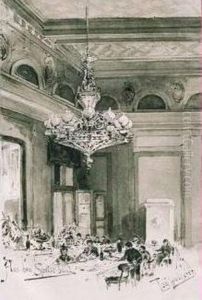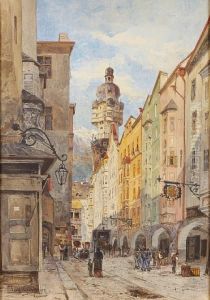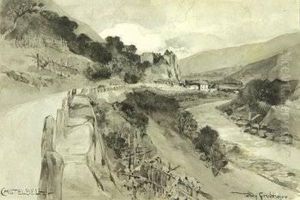Tony Grubhofer Paintings
Tony Grubhofer was an Austrian artist known for his contributions to painting and graphic arts during the late 19th and early 20th centuries. Born on October 11, 1865, in Pressburg (now Bratislava, Slovakia), which was then part of the Austro-Hungarian Empire, Grubhofer displayed an early talent for the arts, leading him to pursue formal education in this field. He studied at the Academy of Fine Arts Vienna, where he was influenced by the academic art traditions of the time, focusing on historical and genre painting.
Throughout his career, Tony Grubhofer was deeply engaged with the cultural and artistic movements of his era, contributing to various aspects of visual art. He was particularly known for his detailed landscapes, capturing the scenic beauty of the Austrian countryside, as well as scenes from his travels abroad. His work often exhibited a keen observation of nature and a delicate handling of light and color, characteristics that made his paintings highly admired among his contemporaries.
In addition to landscapes, Grubhofer also produced a significant body of work in portraiture and genre scenes, depicting everyday life with a realism that was both insightful and empathetic. He was a member of several art associations and participated in numerous exhibitions throughout the Austro-Hungarian Empire and beyond, earning recognition and accolades for his artistic achievements.
Despite his success, Tony Grubhofer remained dedicated to his craft, continuously exploring new techniques and subjects. His later works show an evolution in style, with some moving towards impressionism, reflecting the changing artistic trends of the early 20th century. Grubhofer's legacy is that of a versatile and dedicated artist who contributed significantly to the Austrian art scene of his time.
Tony Grubhofer passed away on August 26, 1935, in Baden, near Vienna, leaving behind a rich oeuvre that continues to be celebrated for its contribution to European art history. His works are preserved in various museums and collections, serving as a testament to his skill and sensitivity as an artist.


